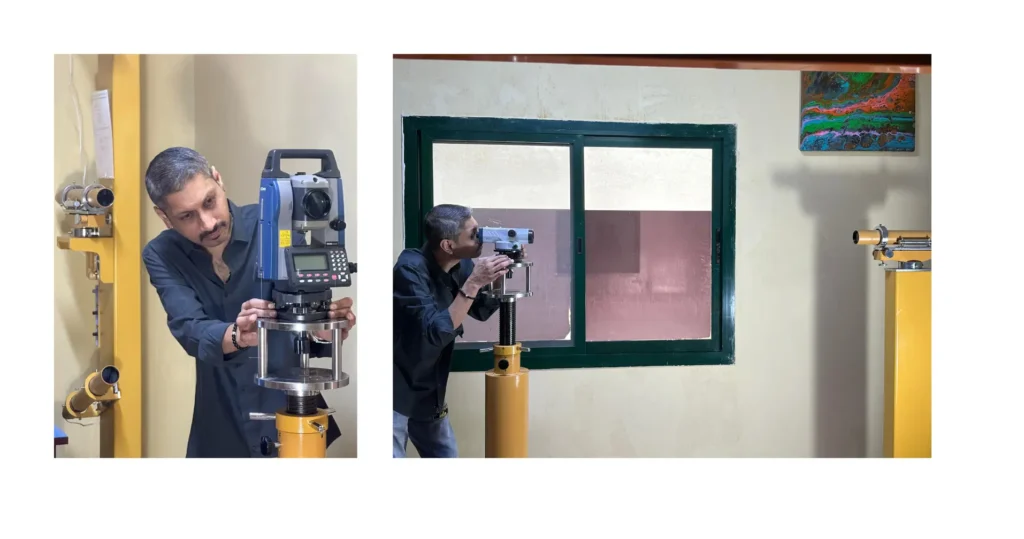Calibration
In a simple definition, Calibration is the comparison of the Reference Equipment (Collimator) with the values of the Device Under Test (DUT) to obtain a measurement result (error, correction, and measurement uncertainty); you may or may not need to perform the adjustment.

Process
The process of calibration includes:
- We compare the DUT’s values to the readings of the Reference Equipment (Collimator) and calculate the error and/or correction.
- We calculate measurement uncertainty to determine the range where the true measured value lies.
- With the above results, we can determine the accuracy of the DUT.
- All these are reported in a Calibration Certificate.
Importance
One main goal in calibration is to determine the accuracy of the DUT. Accuracy will show us how close or far the measured value is to the standard equipment. But how is accuracy determined?
You can determine the accuracy by using the reference equipment and the DUT value that you acquire from the calibration results.
This calibration result will lead us to the value of the “error”, calculated during the comparison of the standard and the DUT.
In survey site conditions, there are various reasons for calibration. Examples of the most common reasons are:
• Accuracy of all measurements deteriorates over time
• Regulatory compliance stipulates regular calibration
• Quality System requires calibration
• Quality of the products produced
• Safety – of customers and employees
• Environmental reasons
• Various other reasons
Calibration is important because it helps ensure accurate measurements, which are foundational to the quality, safety, and innovation of most products and services we use and rely on every day.
Calibration improves the assurance of precise measurements required in surveys and the construction processes afterward. Most of the constructed buildings, bridges, etc., were produced within tight measurement specifications assured by calibration.
Calibrating equipment is important to help ensure accurate measurements and the execution of quality results with reduced errors and recalls. It is also important to calibrate equipment to foster innovation and the development of new technologies, as accurate measurements are foundational to both.
